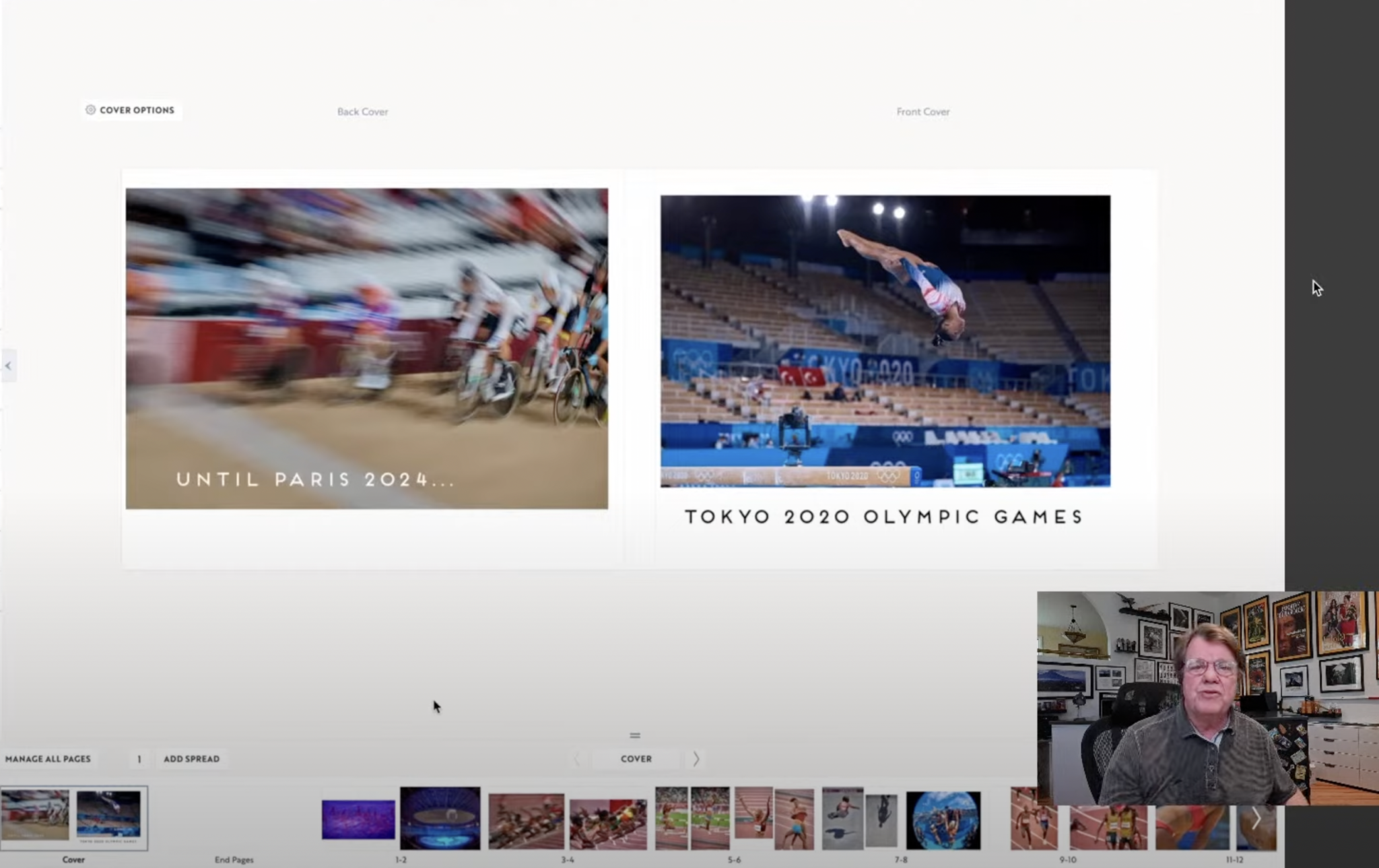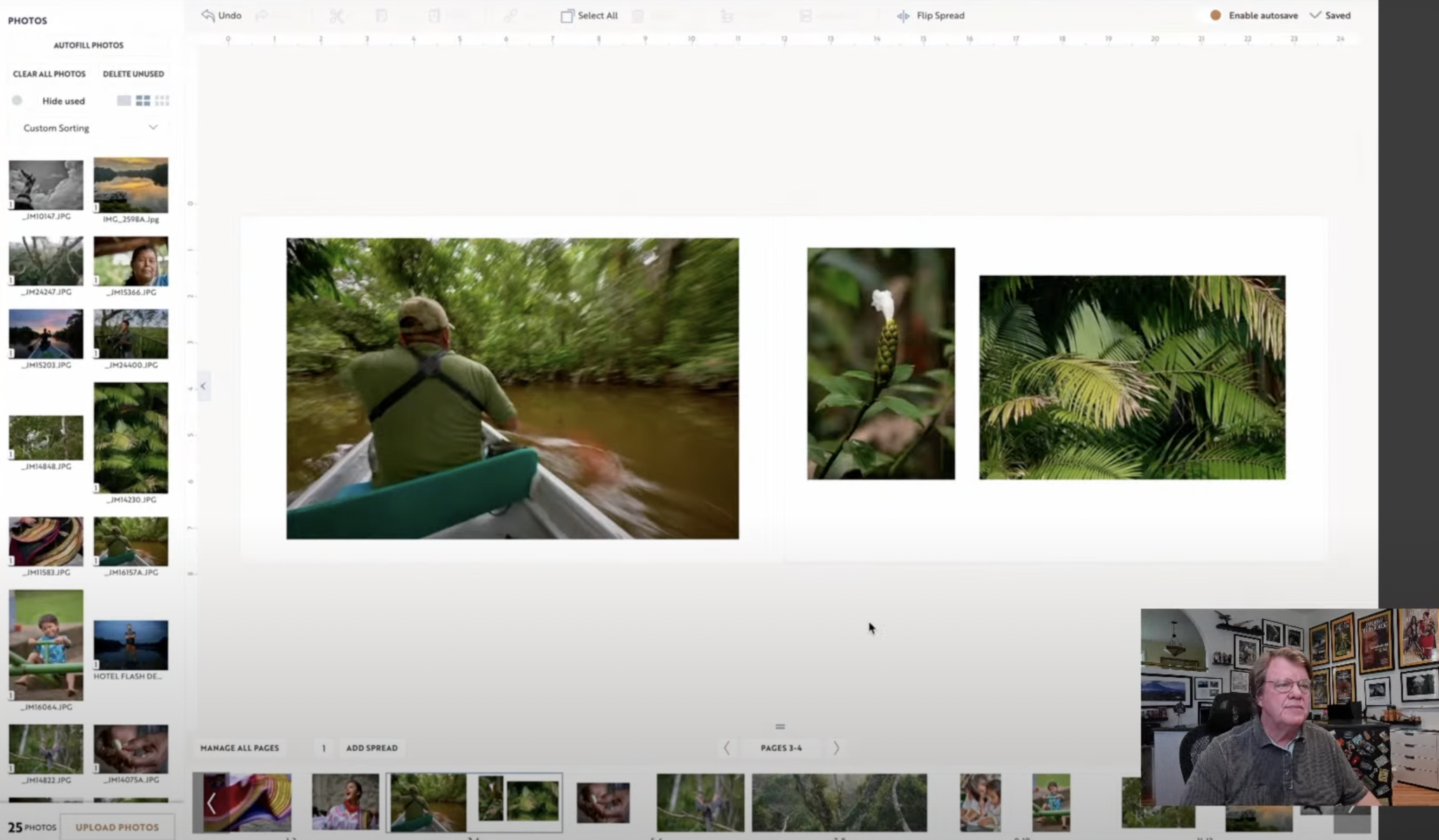Many thanks to our partners at Printique who gave away (3) annual Pro Service memberships during our recent Livestream on bookmaking. There were too many questions in our Chat to get to during our air time, so, following up here. Many thanks for all the questions and for tuning in!
Q&A Chat
Q: What keeps you motivated Joe?
A: I plausibly said “fear” in reply to this question. Fear of failure, fear of not working, fear of all of a sudden realizing I ain’t any good at this and everything I’ve done to date has been fraudulent. Seriously. The anxiety of not being ever good enough is very palpable. But it’s not the worst thing, if you convert that angst into fuel for the fire. The desperate urge to try again. Shoulder the cameras and go back at it. Get up off the canvas and meet the opponent one more time.
Q: Why do a printed book when hard copy is diminishing as time progresses?
A: I would argue that the printed book increases in value. It represents something solid, something you can hold and quite possibly revere. Nothing against the internet, and Instagram and websites. But there is, to me, something special about a book of photos. Not just the visual, either. The tactile, the smell of the paper, and the ability to be languid, and browse. Hard to do with an overheating computer on your lap.
Q: Joe, don’t you believe there is just something more intimate and emotional about sharing your stories along with the images when it is a physical book along with your friends and family over a coffee?
A: Yes! I think the book is a definitive statement of worth. You took the time to commit these images to paper, and to pace them for emotional impact and storytelling continuity. Nothing is more tedious, I think, than waiting on someone to find a pic on their phone and pass that around.
Q: I want to make my first photo book, but I feel like it will never be ready. Would you recommend just making books early in your photography career, learning from it and moving on?
A: It will never be ready. Your pictures will never be good enough. So just do it. Procrastinating, waiting for “the” picture is dodging the bullet. You may look back on this first effort some years from now and go, “What was I thinking?” but that will be a sign of growth and increased skills. So yes, just go and do it.
Q: How long do you wait after an event before you create a collection?
A: It depends on the event. If it’s timely and the experience is still raging in your head in the aftermath, strike while interest is high and the iron in your head is hot. Sometimes it’s a practical decision. You gotta get this out there before everybody stops caring about it. People have short memories, both individually, and collectively, as a culture. We move on. An immediate book is a way to intersect that fast paced aspect of our lives. Then, there is the thoughtful, ruminative approach. Let the pictures and experience marinate in your head a bit. Do a re-edit of the images. Show them to a couple of people. Experiment with layout. All of that can produce a noteworthy tome.

Q: Do you edit your photos differently for print versus online sharing?
A: No, not really. I edit for the best picture, and let the chips fall. Now there are some considerations, say for Instagram or something like that. Insta plays the images so small, it behooves you to choose wisely and for impact at that scale of display.
Q: Do you feel that a certain emotion in some of your images leads you into choosing a certain type of paper that you want to use for each book?
A: Yes, this is an excellent question. I offered the example of a book about a newborn in the house. Soft light, deep emotions, tender approach at camera, to convey the new love and beautiful presence of new life. Might speak to a creamy type of paper, a touch lower on the contrast scale so shadows don’t go deep and harsh. On the other hand, if you have covered a rock and roll tour, you might opt for a glossy paper to accentuate drama, color and intensity.
Q: Is maintaining brightness and contrast of images necessary throughout the book?
A: Yes, simply put. Images should be edited for continuity. Jarringly different values, picture to picture, could become a jagged experience for the reader and have them paying attention to that as opposed to being involved with the editorial message of each frame.

Q: I’ve created a number of photo books using several different publishers, with mixed results. How do you ensure that the images will appear in print just as you see them on your monitor?
A: Great question, and we got the answer directly from Printique below in addition to their descriptions on different paper choices….
The best way to ensure images match what is on computer is a number of ways.
- Calibrate your monitor
- Do a test batch of prints on the paper of your choice for the book. Images will look different depending on the type of paper you choose and its nuances.
Luster
- Luster is the most popular paper choice for good reason. Classic and beautiful, its colors are rich and life-like with true blacks and pure whites. It is the go-to paper for portraits and weddings. It has a slight reflective sheen with a very subtle texture.
Glossy
- If you love the smooth and polished look, you are a high-glossy fan. This distinctively bright and bold paper brings a slick, contemporary look to your photos. Colors are saturated, and whites are brilliant. Glossy offers the widest color range and texture, but it also has quite a glare to it and can show fingerprints. Rest assured; it’s quite a durable paper, and you can usually wipe off fingerprints easily. This is perfect for smaller images too, like your 4x6s and Instagram images because it provides a lot of punch in a small package.
Matte
- Ideal for those with significant photo experience and an appreciation of fine art imagery. This paper has excellent color reproduction but has little to no reflection and a smooth texture. Not recommended for work with dense shadows and rich blacks. One item to consider is that matte paper does not have as much contrast as glossy. This is best for bigger portraits. It makes a statement while being subtle and there will be no glare.
Silk
- The newest addition to the print family is silk. It’s a throwback paper for someone who wants a refined texture with a touch of vintage. It offers a thicker weight and soft reflection with a fine texture similar to vinyl.
Metallic
- Sometimes, you need your photos to sparkle! Metallic paper has a unique sheen for stunning impact and depth. Our most dramatic paper for colors that jump right off the print and black and whites that shimmer and shine! Its surface is smooth and reflective. This paper is a little more than the rest, but the splurge is justified when you see the results. If you are curious to try it, you can always email service@printique.com for paper samples.
Deep Matte
- You’ll fall in love with this paper and what it provides. This one is also, a bit more expensive than the others, but it is worth it because of its uniqueness and fine art appeal. Deep matte has a smooth, silky non-reflective surface. It is soft to the touch and offers a gallery look. It does not work well with dense shadows and rich blacks. Images with natural light and soft tones work best with the deep matte.
Hope the above is helpful. Again, thanks to all who tuned in during the Livestream to have a convo about the importance of photo books!
More tk…..
The post Photo Books! Wrap-Up Q&A from Livestream appeared first on Joe McNally Photography.






